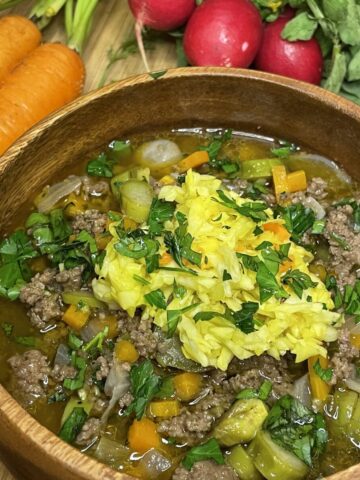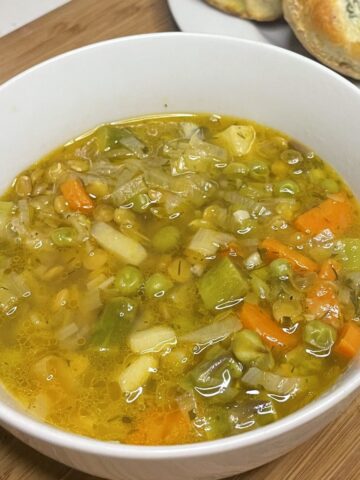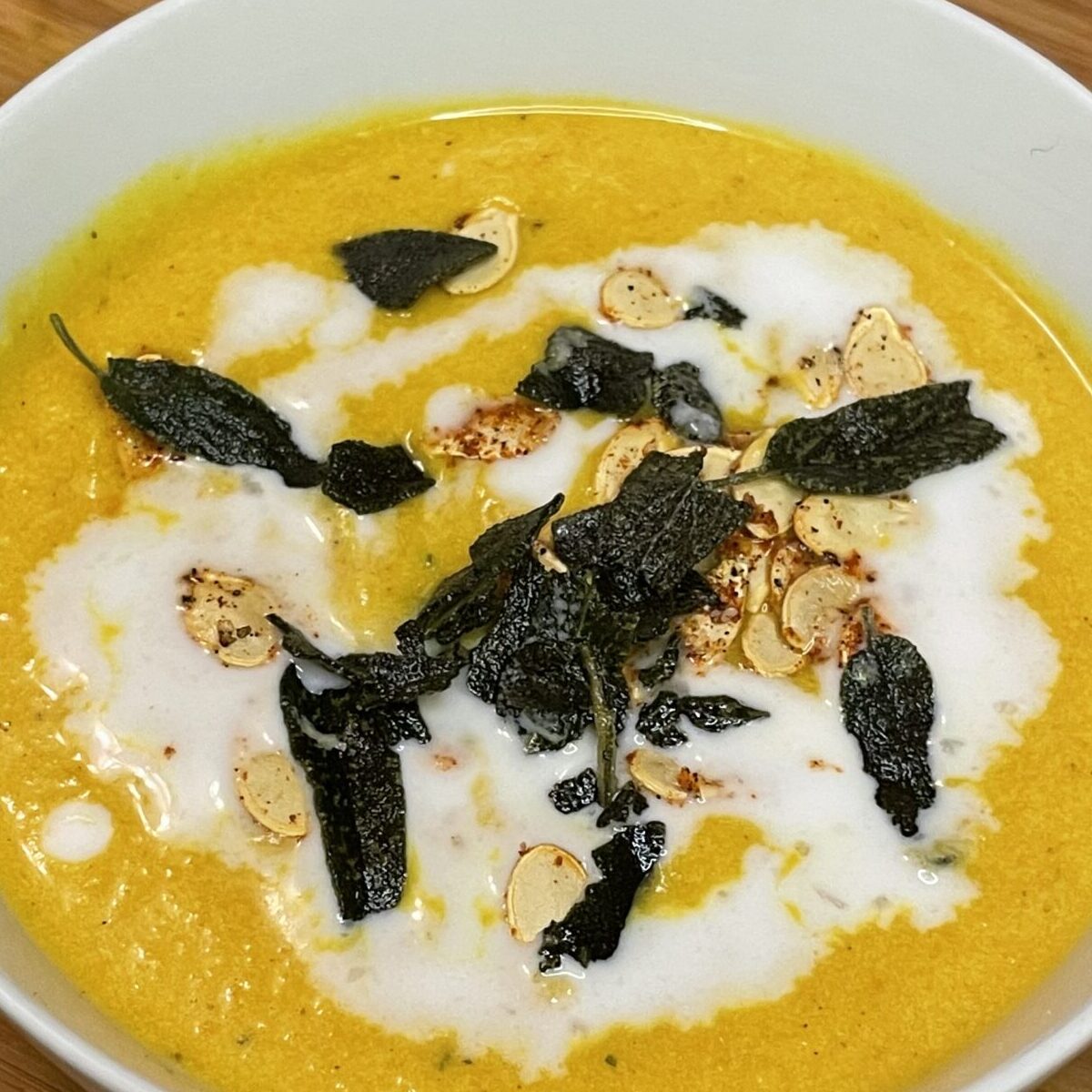The mist curls through the trees as the evening air turns crisp—a sign that it’s time to simmer something warm and nourishing in my woodland kitchen. Tonight, a Miso Veggie Udon brews in my humble pot, rich with the deep umami of miso, tender ribbons of udon, and garden-fresh vegetables. The broth, kissed by whispers of garlic and ginger, carries the essence of comfort, wrapping the soul in a gentle embrace. Take a seat by the hearth, my dear traveler, and let this enchanted bowl of goodness restore your spirit after a long day’s journey. 🍜✨
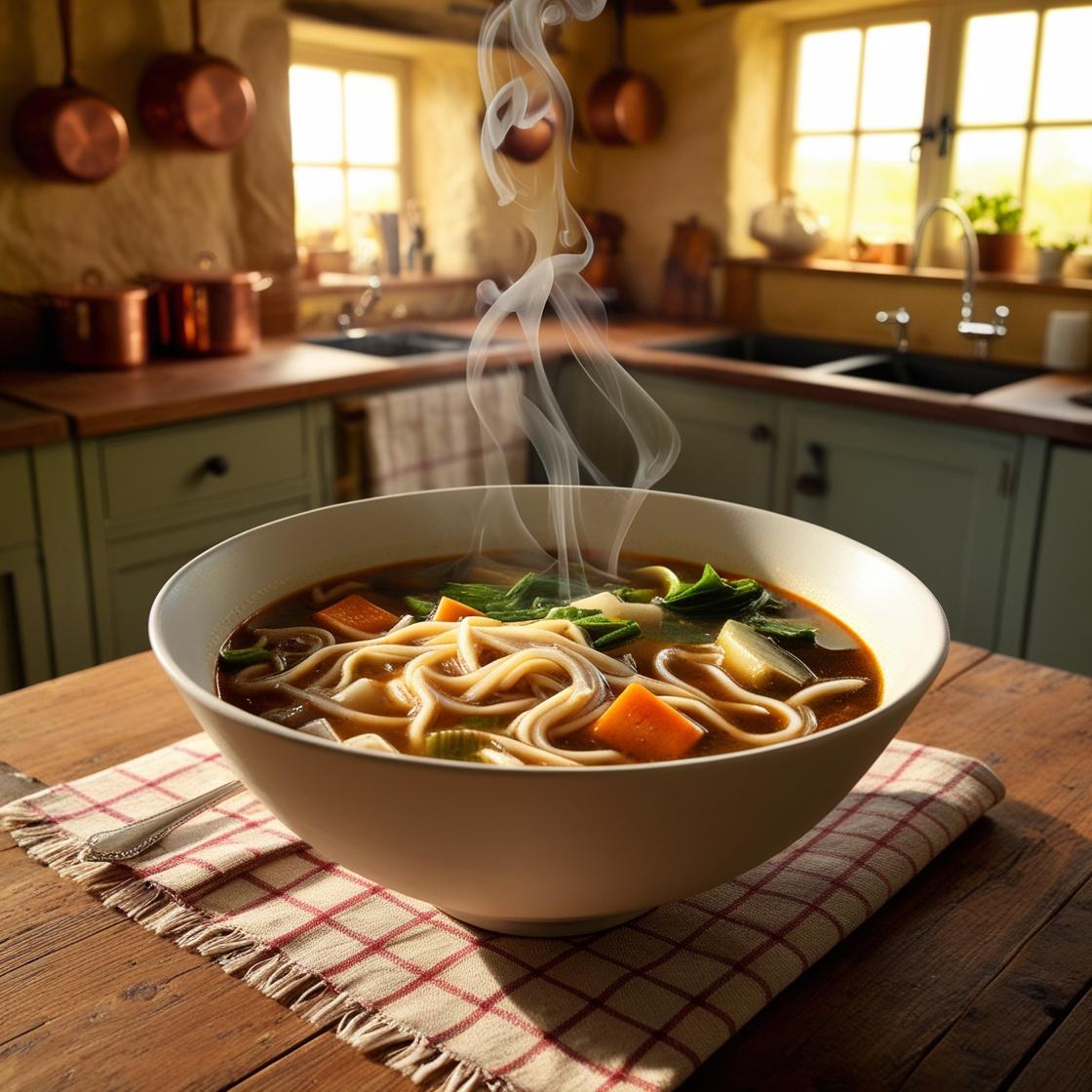
This is a delightful, quick, and healthy recipe to have for any season, but is especially comforting in the cold winters or when fighting sickness!
This was inspired by my Gut Healthy Vegetable Broth recipe.
Jump to:
Ingredients
~*~See recipe card for quantities~*~

Broth
- sesame oil
- sautéed ginger
- sauteed garlic
- bone broth
- miso
- apple cider vinegar
- 1 drop maple syrup optional
Vegetables & Noodles
- carrot
- sweet potato
- bok choy
- green onion
- spinach
- udon noodles
- tofu
- shitake mushrooms
Instructions
Let the crafting commence!
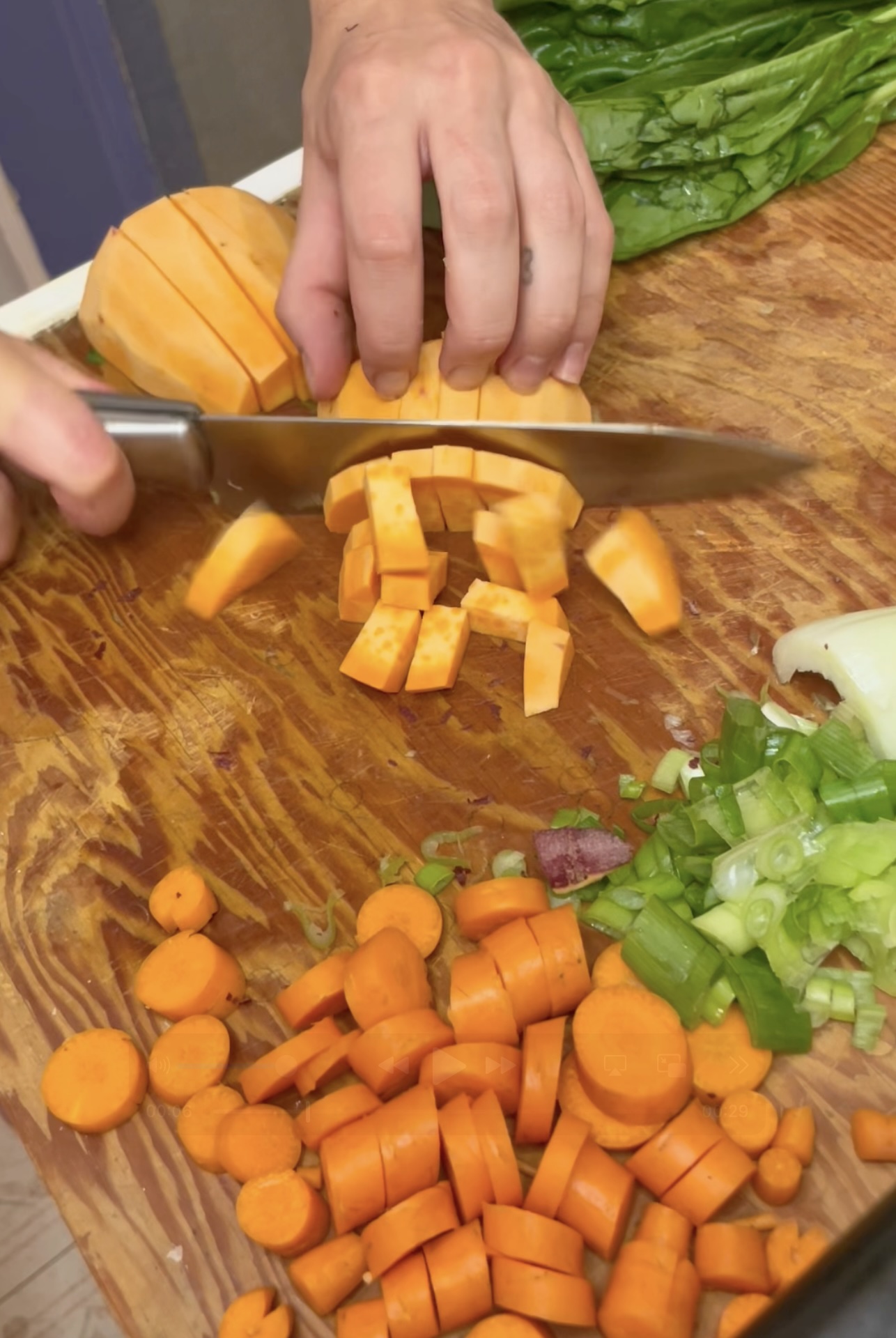
- Grate, chop, and mince your vegetables!
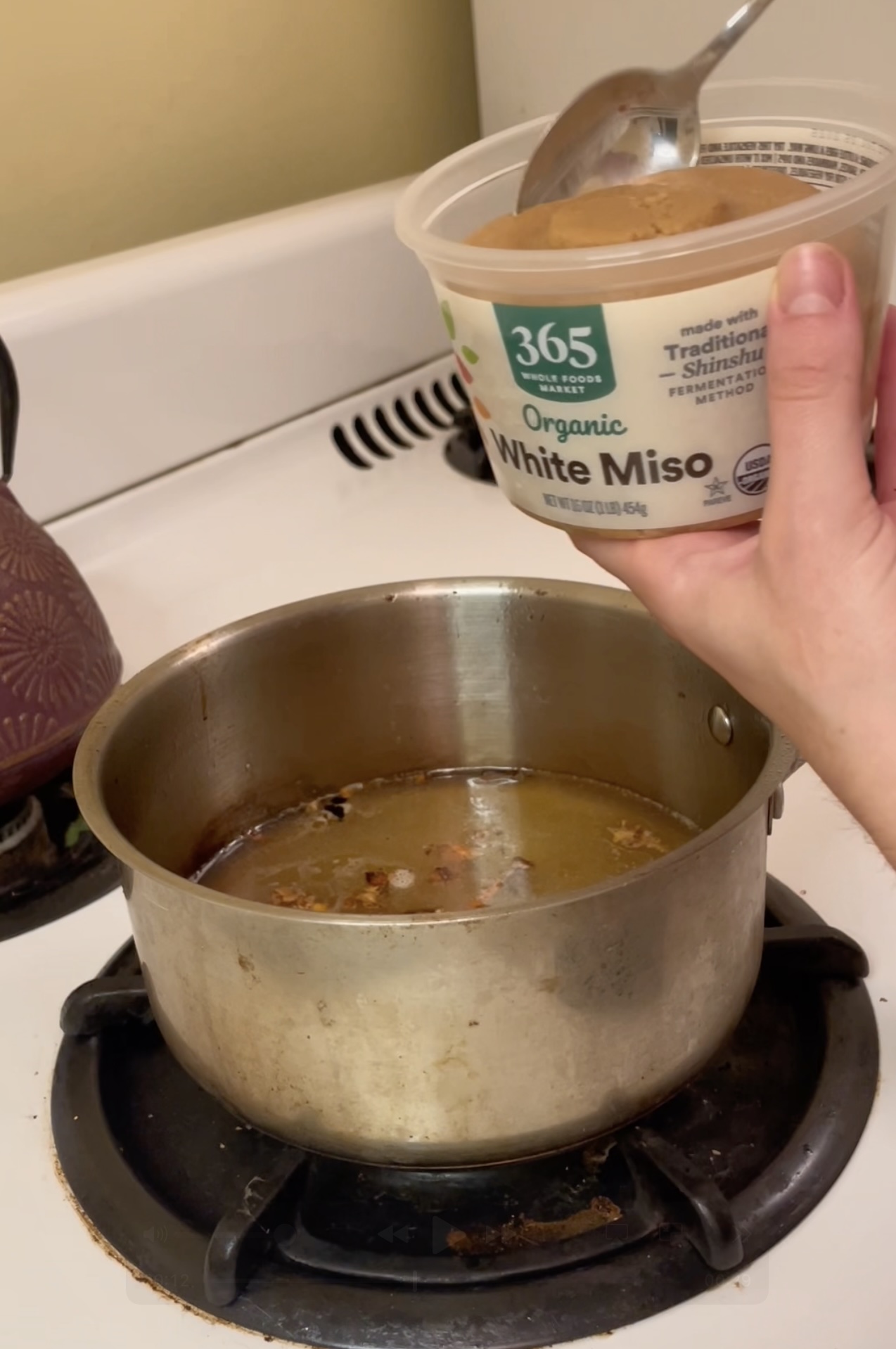
- Prepare your broth with miso paste and apple cider vinegar.

- Add in your chopped vegetables, tofu, and bok choy.
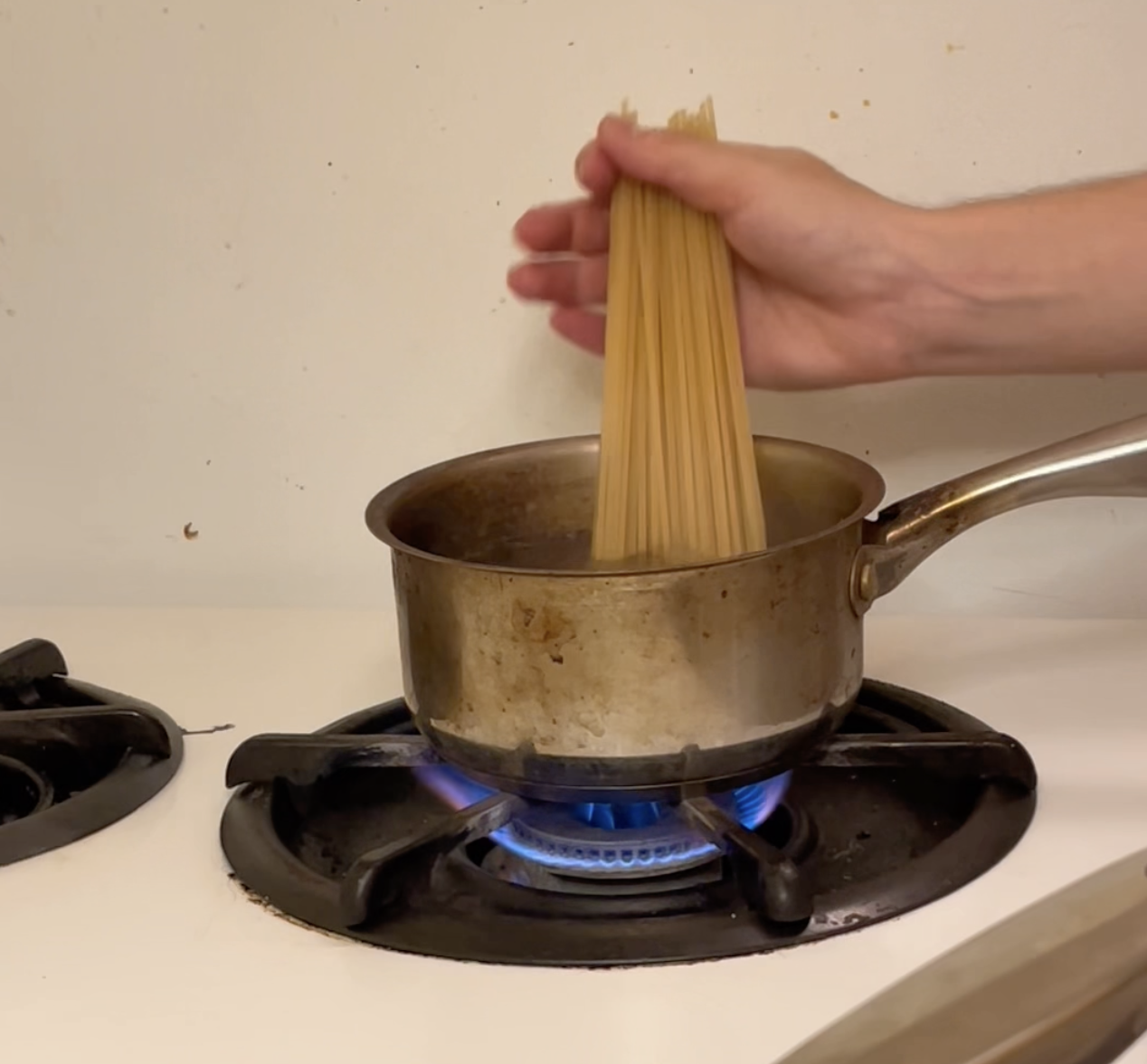
- Prepare your udon noodles and add to the broth!
Hint: If you want to add a little more flavor to the vegetables, you can stir fry the sweet potato in a separate dish to make them crispy before adding to the broth!
Substitutions
- Gluten Free - to make this recipe gluten free, you can substitute the Udon noodles with Rice Noodles, Gluten-Free Udon Noodles, Sweet Potato or Shirataki Noodles, Brown Rice or Quinoa Noodles
- Protein - you can add your preferred shredded protein instead of tofu
Variations
- Spicy - add a small drop of chili paste while cooking to imbue heat into the dish
Equipment
- 1 Cutting Board
- 1 Chopping Knife
- 1 Peeler
- 2 Medium Stovetop Pots
- 1 Wooden Spatula
- 1 Medium Stovetop Pan
Miso Veggie Udon Recipe Card
Equipment
- 1 Cutting Board
- 1 Chopping Knife
- 1 Peeler
- 2 Medium Stovetop Pots
- 1 Wooden Spatula
- 1 Strainer
Ingredients
Broth
- 1 tbsp sesame oil
- 1 inch raw ginger grated
- 2 cloves garlic minced
- 3 cups bone broth
- 2 tbsp miso paste
- 1 tbsp apple cider vinegar
- 1 drop maple syrup optional
Vegetables & Noodles
- 1 medium carrots julienned
- ½ large sweet potato thinly sliced
- 1 stalk baby bok choy chopped
- 2 small green onions sliced; leave some additional for garnishing
- 1 handful spinach
- 6 oz udon noodles
- 6 oz tofu cubed
- ½ cup shiitake mushrooms sliced
Instructions
- Start by heating your sesame oil in one of your pots over medium heat.
- Then add your ginger and garlic, and sautéed for about a minute until fragrant.
- Add in your bone broth and bring to a gentle simmer. Then whisk in your miso paste until fully dissolved.
- Add in apple cider vinegar, carrot, sweet potato, and shiitake mushrooms. Let them simmer for 5-7 minutes until the vegetables begin to soften.
- In the meantime, grab your other stovetop pot and cook your udon noodles according to the packaging instructions. When done cooking, strain and add them to the other stovetop pot of vegetables.
- Gently add in your tofu and baby bok choy and allow everything to cook together for another 3 minutes.
- Stir in your spinach and green onions letting them wilt for about a minute. Taste the broth and adjust the seasonings if needed, adding more miso or vinegar for balance.
- Serve hot and you can garnish with additional chopped green onions!
Storage
Short-Term Storage (Up to 3 Days)
- Store broth and noodles separately to prevent the noodles from becoming too soft and absorbing all the liquid.
- Keep the miso broth in an airtight container in the refrigerator for up to 3 days.
- Store cooked udon noodles in a separate container with a little water or a drizzle of oil to prevent sticking.
Freezing (For Broth Only – Up to 3 Months)
- Miso broth freezes well! Let it cool completely, then store it in a freezer-safe container or portion it into ice cube trays for easy use.
- Do not freeze cooked udon noodles—they lose their texture and become mushy when thawed. Instead, cook fresh noodles when ready to serve.
Reheating
- Add fresh or reheated noodles and veggies just before serving.
- Warm the miso broth over medium heat (avoid boiling, as high heat can affect the probiotics in miso).
FAQ
They are not gluten free because they are made from wheat flour. However, you can use a gluten-free noodle substitute if needed!
Miso is a traditional Japanese fermented soybean paste that adds deep umami flavor to dishes. Basic ingredients include soybeans, fermented grains, salt, and water.
Related
Looking for other recipes like this? Try these:



